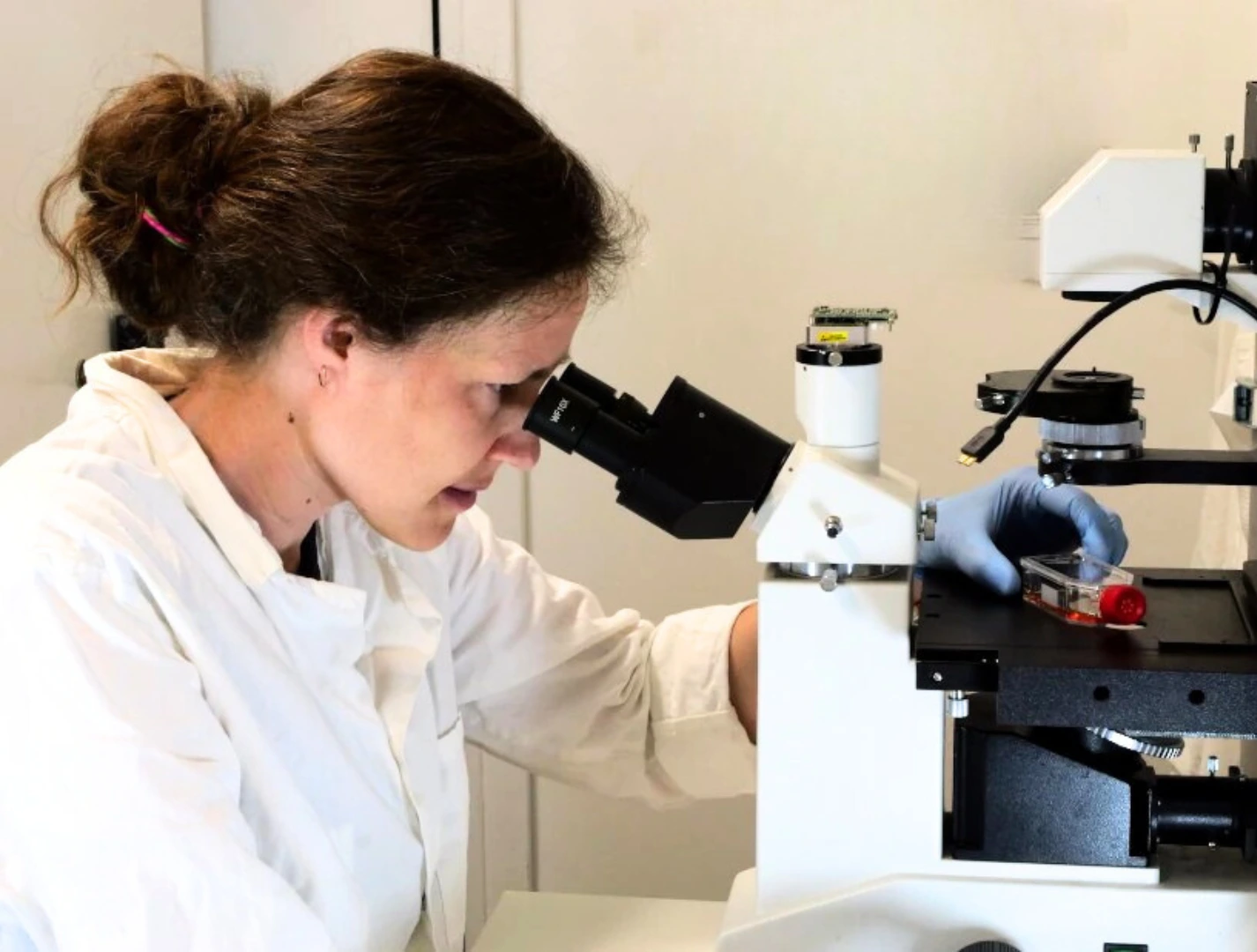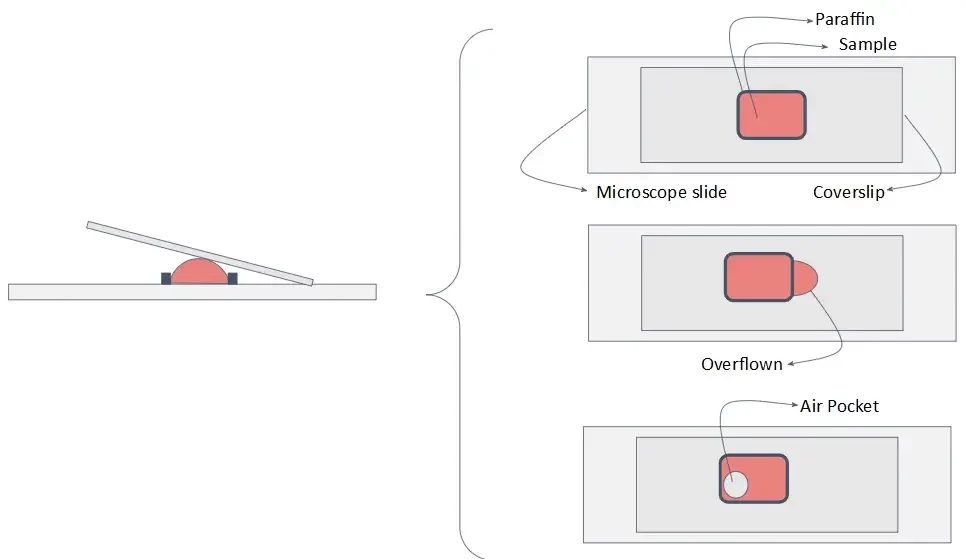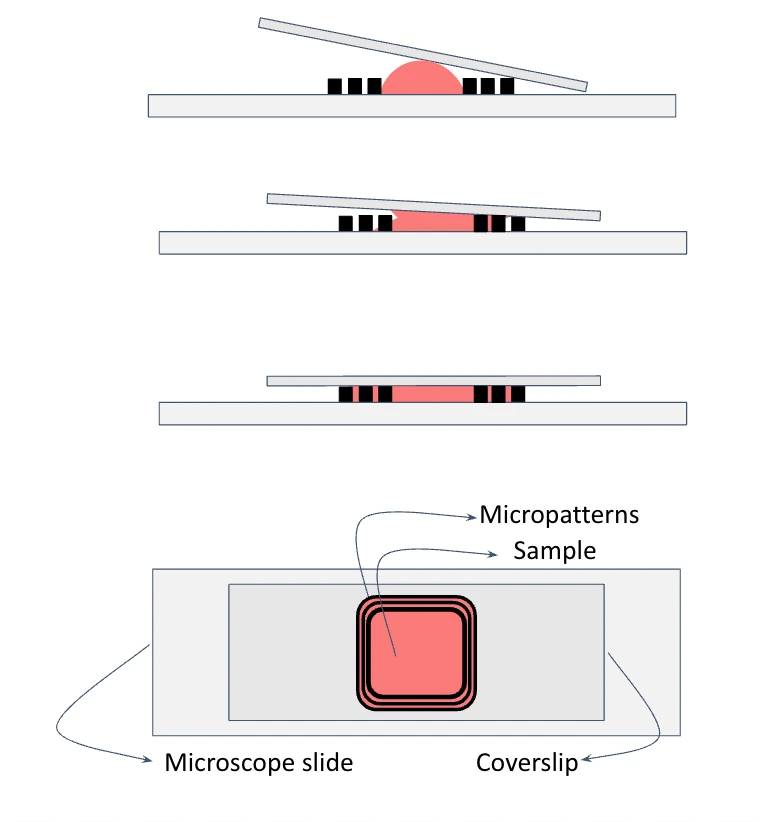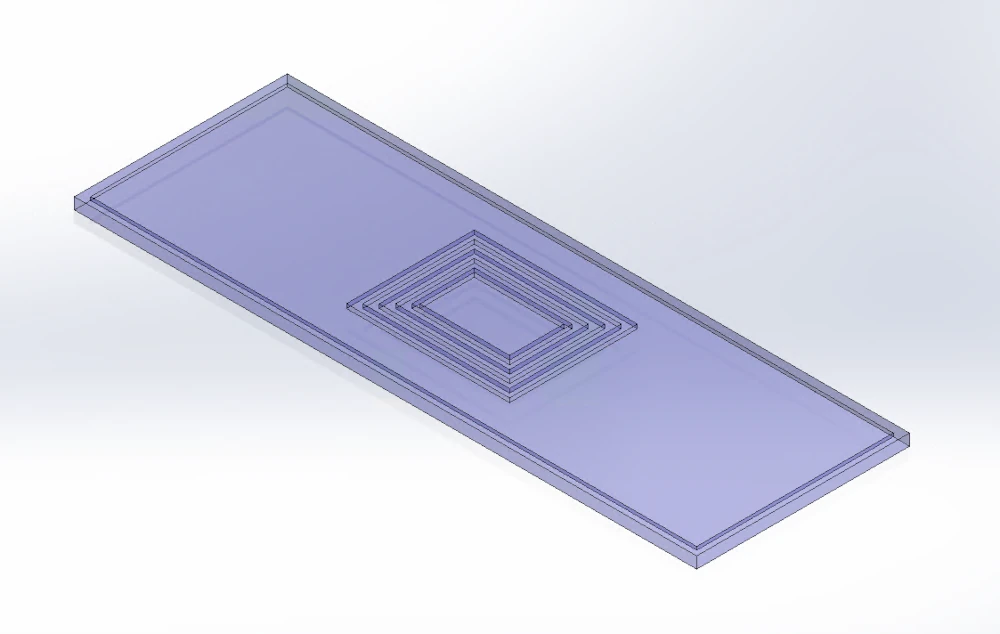Patented technology
Grooved Microscope Slides for Liquid Samples
Micropatterned microscope slides for liquid handling
Highly controlled environment
Highly controlled extracellular environment with stable flow
Compatible with CO2 incubator
Adapted to standard CO2 incubators and biosafety hoods
Up to 4 independent cell cultures
Save time and improve reproducibility
Up to 3-week cell cultures
Less manual work and more accuracy

Need a microfluidic SME partner for your Horizon Europe project?
Microscopy with liquid samples
In many areas of research, detecting particles, called “particles of interest,” in a liquid is crucial. Researchers might also study how these particles behave over time or even try to encourage them to form new structures. These particles can include biological entities like cells (animal or plant, living or not), antibodies, proteins, or viruses. They can also be non-biological, like certain chemical molecules, polymers, or fluids. It’s all about understanding how these particles interact and evolve within the liquid.
Most sample analysis protocols involve using a glass slide and an observation tool, like a microscope or spectrum analyzer. The sample is placed on the slide, and a coverslip is gently added on top to avoid trapping air bubbles or damaging any particles. The slides stay in place due to capillary action, and in some cases, the sample is glued to the slide (often with wax) to prevent evaporation, especially during long observations or when the temperature changes.
Limitations of using regular microscope slides
This type ofprotocol comes with several challenges. When liquid is placed on the slide, it often spreads uncontrollably into a thin film just a few microns thick. This can waste samples along the edges and make it hard to control where theliquid spreads, especially if the analysis instrument requires a specific zone.
Adding the top coverslip can also be challenging. Capillary forces may pull the liquid towards one edge of the slide, wasting more sample and making it harder to keep it centered. The liquid can also spread unevenly, leading to inconsistent thickness that’s difficult to manage.

Finally, any liquid at the slide’s edges can interfere with sealing the system during sealing, making the process dependent on the user’s skill. This variability often results in inconsistent sample preparation and unreliable analysis results. Liquid outside the slide can also cause issues when trying to create a precise, thin cavity for the sample.
The presence of liquid outside the slide and/or coverslip, which may come into contact with the user and/or the analysis instrument, is generally considered unacceptable, particularly in the case of samples containing carcinogenic or toxic products. Moreover, the sealing step is particularly time-consuming to implement and requires the intervention of an experienced user.
Microscope slides for liquid samples
With these limitations in mind, we specifically designed a microscope slide to handle liquid samples. It consists of a glass slide with engraved micropatterns or grooves around the sample visualization area. These micropatterns, which act as capillary barriers, are continuous and help contain the liquid within the area of interest without the formation of air bubbles.


The surface of the glass slide and the grooves can be modified to better host different sample types.
References
Featured microscope image: Author: Morgan Brown, CSIRO – http://www.scienceimage.csiro.au/image/11403
Patent
(EN) LIQUID SAMPLE SUPPORT SUBSTRATE, ASSEMBLY COMPRISING SUCH A SUBSTRATE AND USE THEREOF
(FR) SUBSTRAT DE SUPPORT D’ÉCHANTILLON LIQUIDE, ENSEMBLE COMPORTANT UN TEL SUBSTRAT ET SON UTILISATION
Other applications
Some biological applications of our microscope slides also include:
Microscopic observation of biological samples
Detection of molecules of interest
Chemical reaction chamber
Spectrometry analysis
And many more!
Microscope slides for liquid samples
The technical specifications of the microscope slides for liquid samples are:
| Technical Specifications | |
|---|---|
| Wetted materials | Glass or thermoplastics (PVD, CVD, PECVD) |
| Dimensions | Micropatterns:
Distance between micropatterns: 100 µm |
| Working volumes | TBD |
Customize your pack
Our instruments can be added to different setups depending on your specific needs. In this light, our microfluidic specialists will advise you on the best instruments and accessories depending on your needs and will accompany you during the system’s setup.
Frequently asked questions
Can the working volume or micropatterns of the microscope slides be altered?
For sure! For more information on custom designs, contact us at innovation[at]microfluidic.fr or just click on the “talk to our experts” green button on top.
Are the microscope slides also compatible with upright microscopes?
Yes, by using a conventional coverslip, you can image your sample with inverted or upright microscopes without problems.
Are the microscope slides reusable or disposable?
We recommend to dispose and use new microscope slides for each experiment, but you can clean the slides and reuse them if you wish.

